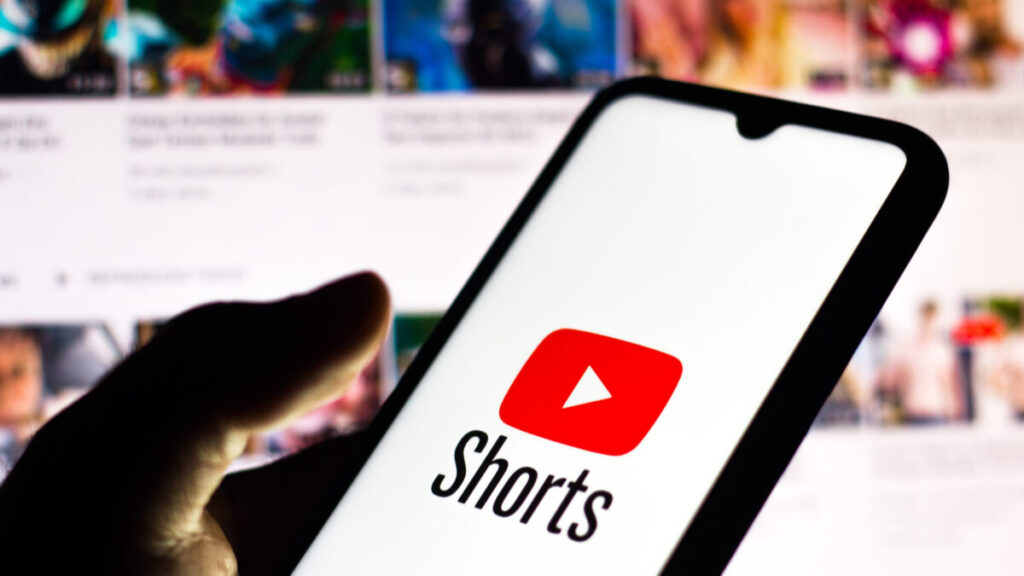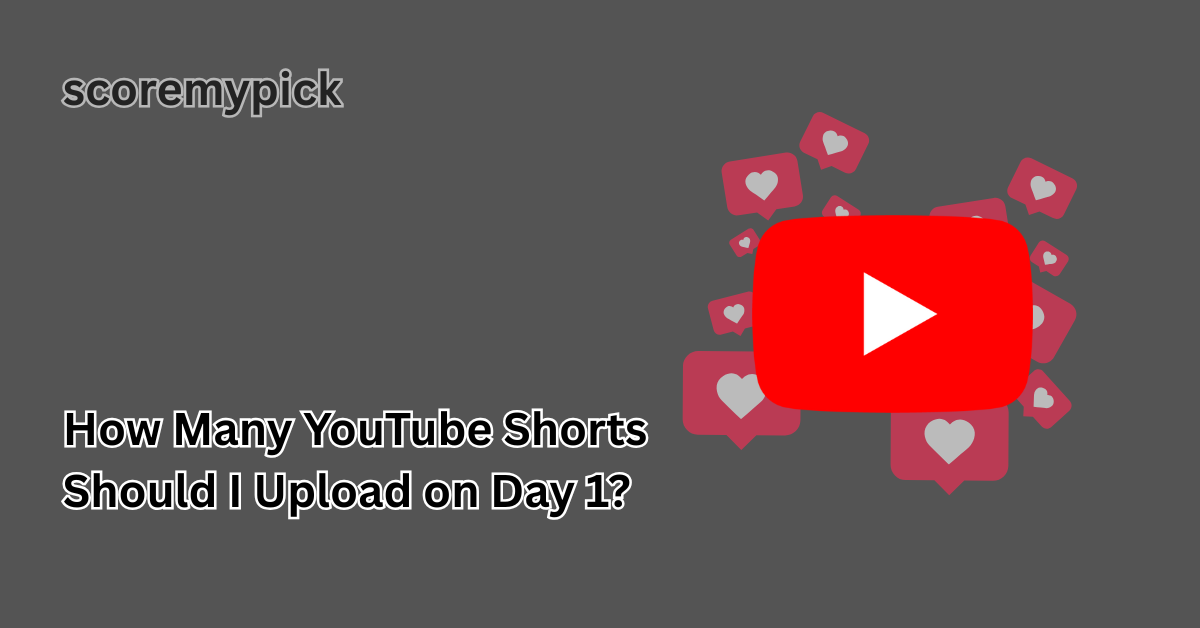There is more than tapping the button to upload to launch your YouTube Shorts journey in 2025. It is the early buzz, getting noticed by the algorithm, and turning curious scrollers into loyal viewers.
The initial 24 hours will determine the direction of growth of your channel. As Shorts is currently attracting a view of more than 70 billion in a day, creators who tailor their day-1 plan can gain popularity within a short period.
And yet the point is the following: it is not related to the spamming of uploads. It is a matter of understanding the number of Shorts to have and when to post which one, and how to get each of them to earn you more.
Start Strong: Why 1–3 Shorts on Day 1 Is a Smart Launch Strategy
In 2025, YouTube’s algorithm rewards consistency, engagement, and watch retention more than raw upload volume. For new creators, uploading 1 to 3 Shorts on day 1 is the sweet spot.
Here’s why:
- 1 Short helps establish your presence, giving you time to analyze how viewers respond.
- 2 Shorts create early variety, increasing the chances of at least one video getting pushed to more viewers.
- 3 Shorts maximize early impressions without overwhelming the algorithm—or your audience.
Posting more than 3 Shorts in the first 24 hours can actually split your reach, meaning each video competes with the other for impressions. YouTube tends to test your initial uploads with a small pool of viewers to measure retention, engagement, and likes. If your early Shorts perform well, your reach can snowball within 48 hours.
Pro Tip: Use your first three Shorts to test different hooks and lengths (15 sec, 30 sec, 50 sec). This gives the algorithm more signals to understand your content type and audience behavior.

Quality vs Quantity: When Uploading More Than 3 Shorts Helps — and When It Hurts
Many new creators believe that uploading as many Shorts as possible on Day 1 will make their channel grow faster. But in 2025, that’s not how YouTube’s algorithm works. The platform values viewer retention and performance signals, not just how many videos you post.
Uploading more than 3 Shorts can help — but only if you’re already producing high-quality, well-edited content with strong hooks. This works best if:
- You have a clear niche and content consistency.
- Your videos are highly engaging from the first 3 seconds.
- You’ve prepared and optimized all uploads in advance.
But when your Shorts get in a hurry, are repetitive, or untimely, then posting too many at the same time will decrease your average performance. In case early uploads receive low watch time or engagement, future video distribution can also be slowed down by the algorithm.
Concisely, too much is not necessarily good, particularly during the first day. It is more intelligent to have the platform gather information about a few good Shorts initially and grow progressively. The majority of creators who grew fast in 2025 began with 2-3 good uploads per day, rather than 10 rushed uploads per day.
Pro Tip: Think of your first few Shorts as your “audition” to the algorithm. You want to give YouTube a clear, strong signal of your quality — not noise.
Timing & Spacing on Day 1: Best Hours to Post Your Shorts
The time you post your Shorts on Day 1 can make or break their performance. YouTube now measures early engagement more closely, especially within the first 2 hours after upload. According to 2025 engagement trends, the best posting windows for new channels are:
- Morning (9 AM – 11 AM) — Ideal for catching daytime viewers and giving the algorithm a full day to test your content.
- Afternoon (1 PM – 3 PM) — High engagement window, especially in the U.S. and Asia time zones.
- Evening (6 PM – 9 PM) — Peak activity hours with the highest click-through rates.
If you’re posting 2–3 Shorts, space them out at least 2–3 hours apart. This helps each video get its own exposure period without competing for impressions.
Example Strategy:
- Short 1: 10 AM — warm up your channel.
- Short 2: 2 PM — boost mid-day engagement.
- Short 3: 7 PM — tap into the evening rush.
Pro Tip: Check YouTube Analytics > Audience Tab once your channel starts growing. Over time, it will show you the exact hours your viewers are active, letting you fine-tune your posting schedule.
What to Watch in the First 48 Hours
The initial 48 hours of the growth of your Shorts are the most crucial. The algorithm on YouTube is very keen to follow some fundamental metrics throughout this frame to determine the extent to which your content will be promoted to other audiences. In case you are doing well in your initial performance, your Shorts could go viral despite having a small number of subscribers.
Here are the key metrics you should focus on:
Average View Duration (AVD):
- AVD shows how long viewers stay on your Short. If your video is 30 seconds and viewers watch at least 20+ seconds on average, that’s a strong retention signal.
Watch Percentage:
- Shorts with 70%+ watch rate in the first 48 hours are far more likely to be recommended.
Engagement Rate:
- Comments, likes, and shares tell the algorithm your content sparks reactions. High engagement in the early hours boosts visibility fast.
Rewatch Rate:
- Shorts that people watch more than once are golden. If your content hooks viewers to loop, it sends a powerful “this video is addictive” signal.
Pro Tip: Avoid editing or deleting a Short if it doesn’t perform immediately. Some Shorts take 24–48 hours to gain traction after the algorithm finishes testing them in smaller groups.
A Practical Day-1 to Day-7 Upload Plan for New Creators
It is a wonderful thing to have a good Day 1, but continuing to grow after that is what creates an actual audience. An obvious upload schedule, Day 1-Day 7, will assist the algorithm in understanding your post schedule and will reward you with increased exposure as time passes.
Here’s a recommended strategy for new creators in 2025:
- Day 1: Upload 2–3 well-edited Shorts, spaced throughout the day.
- Day 2–3: Upload 1–2 Shorts daily, focusing on improving hooks and retention.
- Day 4–5: Analyze the performance of your first uploads. Double down on the formats that got the best watch time.
- Day 6: Experiment with 1 additional format or trend to test algorithm responsiveness.
- Day 7: Post 2 Shorts at peak hours and engage actively in comments to boost interaction.
Example Posting Schedule:
- 10 AM — Main niche Short (strong hook)
- 2 PM — Trend or remix Short
- 7 PM — Value-driven or storytelling Short
Pro Tip: Consistency > bulk uploads. YouTube’s system learns faster when your posting pattern is predictable and quality remains stable.
Final Thought
On Day 1, it is not only recommended to upload 13 Shorts (the number 3 is a requirement, though), but it is a growth formula that is supported by the present trends in the algorithms. Prioritize quality, timing, and retention, and you will be rewarded with reach on the platform. It is not about how much you are going to upload, but to ensure that each Short counts.
FAQs
How many Shorts should I upload on YouTube in one day?
You can upload 2–4 Shorts per day to grow faster without overwhelming your audience.
Can 15-second Shorts go viral?
Yes, even a 15-second Short can go viral if it’s engaging and hooks viewers in the first 3 seconds.
How much do Shorts pay per 1000 views?
On average, YouTube Shorts pay $0.01–$0.06 per 1,000 views, depending on location and engagement.
Is 3 Shorts a week enough?
Yes, 3 Shorts a week can be enough for steady growth, but posting more often can boost visibility and reach.

